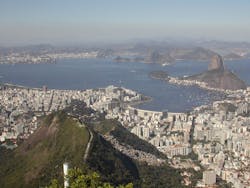An Unsavory Spectacle in Rio
Amidst the magic of the Olympic Games and the stunning star athletes they showcase glistens an unsavory spectacle: The extent of Rio’s water pollution problems and its troubled water bodies.
According to a National Geographic article, much of the pollution comes from raw sewage. It also comes from urban runoff and industrial wastewater—from about 17,000 industries around Guanabara Bay.
Dense population and lack of proper sanitation create a perfect storm of raw sewage to contaminate Guanabara Bay, where Olympians row and sail. And because many houses in the bay’s drainage basin are disconnected from sewage treatment plants, human waste flows straight into the bay—which naturally creates a risk of waterborne illness.
These major problems are characteristic of developing countries. Worldwide, 2 million tons of sewage, industrial and agricultural waste is discharged into waterways, according to the United Nations.
Flint, Rio—it seems as though 2016 has been the year of bringing major water issues to light. So if we’re looking for any sort of silver lining in all of these dire reports, it’s that identifying problems to national and global audiences is a good first step towards heralding change—however far off that may be.
